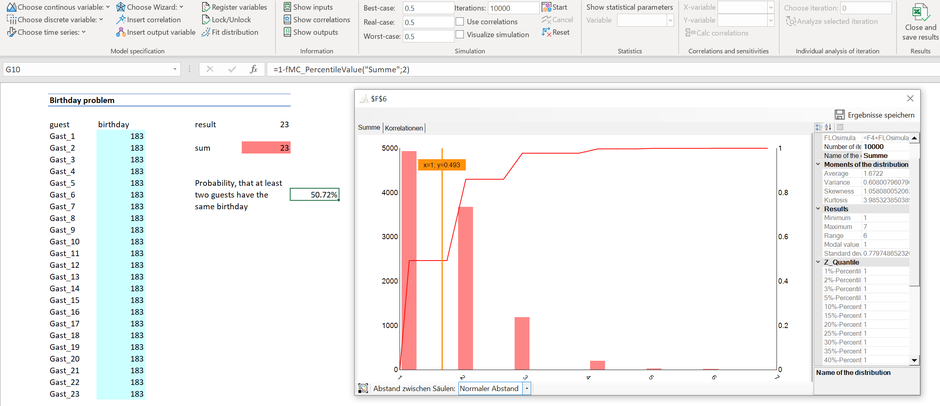Here's the well-known birthday problem: There are 23 people at a party. What is the likelihood that at least two of these guests will celebrate their birthday the same day? (We assume that one
year has 356 days and none of the guests are born on a leap year)
A common search via the well-known search engines reveals various solutions using the famous permutation sign (!). The list of concrete formulas for solving the birthday problem will not been
shown here, there are all too complicated for us.
In the following Excel we have listed our 23 guests with their birthday between 01.01 (day 1)
and 31.12 (day 365). In cell F4 we used a matrix formula of Excel which determines the number of multiple entries. We present the result of a simulation with 10,000 iterations. So we see that the
probability that at least two guests have birthday the same day is over 50%! Well, would you have expected the result?
Instead of relying on arithmetic calculations using permutations, that most people perceive as difficult (so do we), a simple formula in Excel in combination with a simulation is enough to
achieve the result.
So, if you bet on two soccer players having birthday at the same day (given the starting line-up of both teams, including one referee), you will probably win with more than a 50% chance. Have
fun!
Note: We have used MC FLO with german language settings enabled.


Kommentar schreiben